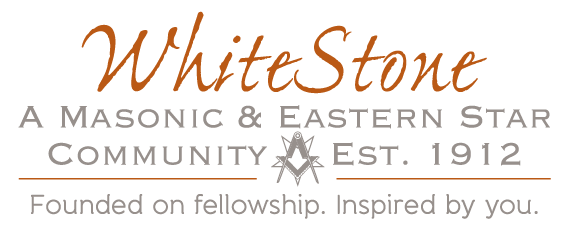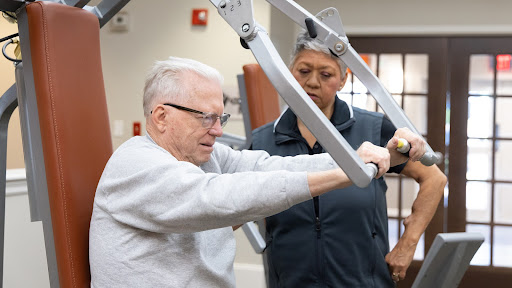It’s natural to experience changes in the mind and body throughout aging. In this case, we’re talking about osteoporosis and osteoarthritis – two conditions that many older adults develop and two conditions that most people think are the same thing, but aren’t.
According to the National Council on Aging, osteoporosis affects about 54 million people across the U.S., and women are four times more likely to develop it than men. So, what is osteoporosis, and how is it different from osteoarthritis?
We’ll break it down for you below and share how our senior living community incorporates eight dimensions of wellness into everyday life to help seniors improve their physical health and live with a stronger sense of purpose.
What’s the difference between osteoporosis and osteoarthritis
St. Elizabeth Healthcare shares precisely what these two bone conditions are:
Osteoarthritis
Osteoarthritis is the most common type of arthritis, which is inflammation and deterioration of your joints. Osteoarthritis is the result of everyday wear and tear and is most common in older adults.
Hips, knees, neck, and lower back are commonly affected joints with osteoarthritis. Symptoms of osteoarthritis include:
- Pain after movement and exercise
- Joint stiffness
- Tenderness
- Loss of flexibility
- Bone spurs
- Swelling
The following factors increase your risk of developing osteoarthritis, according to the CDC:
- Family history/genetics
- Joint injury or overuse
- Age – the older you are, the higher the chances of developing rheumatoid arthritis and osteoarthritis
- Gender – women over the age of 50 are more likely to have osteoarthritis
- Obesity
While there is no cure for osteoarthritis, there are lifestyle habits, exercise programs, and therapies that help strengthen muscles and increase bone density. Joint replacement surgery is also a viable option if less invasive treatments don’t work.
Osteoporosis
Osteoporosis is a progressive bone disease. If you have osteoporosis, your bones become weak and brittle, causing you to be at greater risk for bone fractures.
Unfortunately, with osteoporosis, there are no symptoms until a bone actually breaks. When this happens, osteoporosis includes severe back pain, loss of height, and even spine malformations.
- So, what can you do to improve bone mass and prevent osteoporosis from developing?
- Take daily calcium and vitamin D supplements (talk with your doctor first)
- Lessen/eliminate alcohol intake and smoking
- Participate in gentle strength training exercises and social activities
According to University of California San Diego Health, those most at-risk for developing osteoporosis are:
- White and Asian women over the age of 50
- Men with low testosterone levels
- Heavy smokers and drinkers
- Any older adult who weighs less than 125 lbs.
- Individuals who have undergone bariatric surgery
- Those with a parent or parents that had fractured their hips
- Individuals with kidney failure, inflammatory bowel disease, rheumatoid arthritis, liver disease, or an eating disorder
- Those who take daily high-risk medications (ask your doctor about what you’re currently taking and how it affects your bone density)
Now that you understand the differences between osteoarthritis and osteoporosis, we’ll share how WhiteStone’s senior living lifestyle helps older adults find the perfect combination of health and support.
Senior living community dimensions of wellness
We believe it’s just as important to live better as it is to live longer. In fact, these ideas go hand in hand. At WhiteStone, we take a holistic approach to wellness based on eight dimensions that promote healthy aging.
One of these dimensions is physical health. Our array of fitness classes and programs helps older adults manage and even improve certain conditions like osteoarthritis and osteoporosis. With a state-of-the-art fitness center, indoor pool, and plenty of spaces for group physical activity, bones and positive attitudes alike become stronger.
Some examples of fitness classes for varying interests and abilities include:
- Water aerobics
- Tai Chi
- Yoga
- Strength and balance classes
- Chair volleyball
Residents love these exercise options because not only do they work your body, but they’re a fun time too! Combined with healthy dining choices and on-site rehabilitation services, you’ll be well on your way to improving bone-related conditions.
Forge a path to healthy living at WhiteStone.
As you navigate the aging process, you must make important decisions for your health and future. At our retirement community in Greensboro, NC, you’ll receive all the support you need while you lead an active and fulfilling lifestyle. Call us today to learn more.

